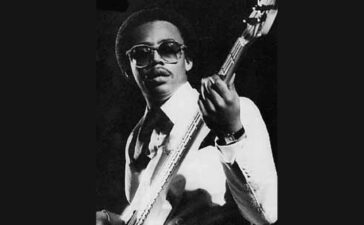Marcus Miller is renowned for his exceptional bass skills and innovative contributions to various genres, particularly jazz and funk. One of his standout performances can be found in the song “Spinnin’” by Bernard Wright, featured on Wright’s 1985 album Nard. This track is a brilliant showcase of Miller’s unique style, featuring his intricate bass lines that not only drive the rhythm but also enhance the overall musical texture. This article delves into the specifics of Miller’s bass line in “Spinnin’,” exploring its structure, techniques, and the impact it has on the song.
Context of the Song
“Spinnin’” is a vibrant blend of funk and jazz fusion, highlighting Bernard Wright’s keyboard prowess and vocal skills alongside Miller’s dynamic bass playing. The song features an infectious groove that captures the essence of the mid-1980s funk scene, marked by complex harmonies and rhythmic intricacies. As a key collaborator, Marcus Miller’s bass line serves as the backbone of the track, contributing significantly to its energy and flow.
Analyzing Marcus Miller’s Bass Line
- Groove and Rhythm:
At the heart of “Spinnin’” is Miller’s ability to establish a compelling groove. His bass line is characterized by a steady, syncopated rhythm that locks in with the drums, creating an irresistible urge to move. The combination of sustained notes and rhythmic accents gives the track a danceable quality that is a hallmark of Miller’s playing style. - Melodic Elements:
While serving as a rhythmic foundation, Miller’s bass line also incorporates melodic elements that add depth to the composition. He deftly navigates between the lower and higher registers of the bass, using slides and fills to create engaging phrases that resonate with listeners. This melodic interplay enhances the overall arrangement, elevating the song beyond a simple funk groove. - Slap and Pop Techniques:
Miller is known for his signature slap bass technique, and “Spinnin’” is no exception. Throughout the track, he employs slapping and popping techniques to create a percussive and punchy sound. These techniques not only add texture to the bass line but also contribute to the track’s infectious energy. The rhythmic interplay between the slap notes and the melodic phrases showcases Miller’s mastery of the instrument. - Interaction with Other Instruments:
One of the defining features of Miller’s bass line in “Spinnin’” is its interaction with other instruments. The bass does not merely support the harmony but engages in a dialogue with Wright’s keyboards and the brass section. This interplay creates a rich sonic tapestry, where each instrument complements the others, highlighting Miller’s ability to collaborate effectively within a larger ensemble.
The Impact of Miller’s Bass Line
Marcus Miller’s bass line in “Spinnin’” has left a lasting impact on the funk and jazz fusion genres. His innovative approach and technical prowess have inspired countless bass players and musicians across the world. The groove he establishes is not only memorable but also showcases the potential of the bass guitar as both a rhythmic and melodic instrument.
Moreover, “Spinnin’” exemplifies Miller’s versatility and ability to adapt his style to different musical contexts. By blending complex rhythms with melodic sophistication, he sets a standard for future bassists to aspire to, proving that the bass guitar can be both foundational and expressive.
Conclusion
In “Spinnin’,” Marcus Miller delivers an iconic bass line that epitomizes his mastery of the instrument. Through his innovative use of rhythm, melody, and technique, he elevates Bernard Wright’s track to new heights, creating a timeless piece of music that continues to resonate with listeners. As a testament to his skills, Miller’s performance in “Spinnin’” serves as an enduring example of how the bass can shape and enhance a musical composition. His legacy as a bassist and collaborator is firmly cemented in the annals of music history, inspiring generations of musicians to explore the limitless possibilities of their craft.









